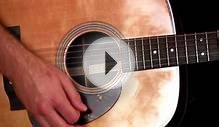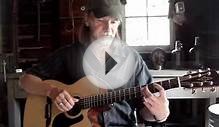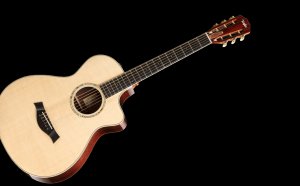
Country acoustic Guitar lessons
Exploring the world of country guitar is a diverse and exciting journey, one from which a guitarist of any background can benefit, while having fun.
Modern country guitar is an amalgam of traditional and not-so-traditional playing approaches borrowed from several related homegrown American styles. As such, it includes elements of blues, bluegrass, rock and roll, and even jazz, and it offers a tasty mix of expressive and challenging playing techniques.
The key musical building blocks that form country guitar’s foundational vocabulary are the major and minor pentatonic scales, the major scale and the Mixolydian mode, major and minor chords and their corresponding arpeggios, dominant sevenths and ninths, and the judicious use of chromatic passing tones.
Mainstay country guitar-playing techniques include flatpicking, fingerpicking and hybrid picking (pick-and-fingers technique); the exploitation of open strings and licks played in the “open position, ” which have a characteristic “twangy” tone; and lots of string bends and finger slides.
The go-to ax for most country pickers is a solidbody electric guitar, particularly a Telecaster-style design, equipped with single-coil pickups and fairly light-gauge strings (.009s or .010s). More-traditional country guitarists, such as the legendary Chet Atkins, came of age playing a semi-hollowbody guitar equipped with humbuckers, and country-rock players, like the Kentucky Headhunters’ Greg Martin, prefer Gibson-style, humbucker-equipped solidbodies.
Classic American-style tube amps, such as vintage Fenders, are the rig of choice for many country guitarists. Most players eschew the use of high-tech, high-gain amps or psychedelic effects and opt instead for a more “honest”-sounding bright-clean and/or “organically” overdriven tone with some spring reverb and compression.
Interestingly, country guitarists tend to approach soloing in a way similar to jazz musicians, often crafting licks that either melodically describe the underlying chord changes via arpeggio-based ideas or emphasize chord tones. (By comparison, the rock-oriented approach to soloing involves finding a scale or mode that “agrees with” a chord and playing licks and patterns based on that scale.)
Country guitarists will often strive to emulate the signature licks of fiddle, banjo or pedal-steel players, cleverly borrowing a variety of techniques and musical approaches from these instruments and adapting them to the guitar. As is the case with any style, the best way to get a grasp of country guitar is to listen to its most celebrated pickers past and present and learn some of their signature licks and playing approaches. Check out old-school country guitarists such as Atkins, Merle Travis, Hank Garland and Jerry Reed, acoustic bluegrass flatpickers like Doc Watson and Tony Rice, and modern electric country players such as Albert Lee, Brent Mason, Brad Paisley, Johnny Hiland, Keith Urban, Jerry Donanue and Vince Gill, to name a few.
In this lesson, Guitar World presents 20 country licks designed to teach you how to play authentic country guitar. Each lick incorporates techniques and stylistic elements that are characteristic of either a specific artist or a subgenre of the greater country guitar style.

FIGURE 1, based on the A Mixolydian mode (A B C# D E F# G), with the minor third, C, added for a bluesy twist, is played in second position and utilizes lots of double and single pull-offs to open strings, which create an instant country-twang vibe. You’ll want a good, strong attack on the picked notes, as this will give you plenty of momentum to make the pull-offs and hammer-ons as loud and clear as possible. When pulling off, be sure to pull the string in toward the palm as you release it.
The bend toward the end of the lick can be tricky to perform. Because it’s on the A string, you’ll want to bend the string downward, pulling it in toward your palm, as opposed to pushing it away from the palm. (This is a good general rule of thumb when bending on the bottom two strings.) Make sure you’re bending the B note up a half step, to C, as indicated. You can check your pitch by comparing it to that of the unbent C note at the third fret. Use this lick as an ending to a solo or song.
Performed with hybrid picking, FIGURE 2 cascades down the C major pentatonic scale (C D E G A) in four-note groups, with pull-offs used at every opportunity. The right hand alternates between plucked upstrokes with the middle finger and downstrokes with the pick. When plucking, really snap the string so that it smacks against the fretboard, producing a sharp accent, which will create that signature country guitar “spank.”
This bluesy lick sounds great over an E or E7 chord. It incorporates double-stops (two notes played together), hybrid picking and the use of the b3 from the minor pentatonic scale, in this case, the note G in E minor pentatonic (E G A B D). Another way to reckon the b3 is as the #9, which is a very bluesy/jazzy-sounding altered-tension tone.
Begin this lick on the upbeat of beat one, plucking the G and B strings together with your pick hand’s middle and ring fingers. Barre your fret-hand ring finger across these strings at the 14th fret and pull it off to an index-finger barre at the 12th fret. Alternatively, you could fret the 14th-fret notes with the tips of your ring finger and pinkie. At the end of bar 2, bend the G string at the 12th fret up a quarter step by pulling the index-finger barre slightly downward, in toward the palm.
This lick is commonly found in what could be referred to as a modern “country cha-cha” groove. Try to make all the notes in the first bar very staccato (short and detached) by releasing your fret-hand grip on each note immediately after you play it. The easiest way to perform the picking in this bar is to attack the D string with the pick and the G string with the middle finger.
To sound the double-stops in bar 2, pluck the B-string notes with your middle finger while simultaneously picking the G string with the pick. You can alternatively pluck the two strings with your middle and ring fingers. The challenging part is at the end, where you’ll want to keep the fifth-fret E note on the B string ringing while bending and releasing the C# note on the G string’s fifth fret. Try to get a good pick-hand attack on the bend, as this will give the notes momentum to clearly ring through the release.
This is a common bluegrass-style run in the key of G, played in first position and flat-picked throughout, with the brief exception of a grace-note finger slide in bar 2. The second note, Db is the flat five of the key, which is known as a “blue note.” Notice how the B and the Bb notes (the major and minor third, respectively) ring together in bar 1, producing a fleeting dissonance. This combined ringing of picked notes—called a floatie by bluegrass players—is a clever move that emulates the ringing licks that banjo and fiddle players like to play. The slide in bar 2 is best performed with the middle finger.
thinking among among thinking skills analysis means critical thinking among students critical thinking among teachers and students critical thinking among students pdf thinking noodles among us critical thinking among college and graduate students creative thinking among students thinking around corners thinking around meaning thinking around corners podcast thinking around the box thinking around corners meaning thinking around the same lines thinking around definition thinking around the topic means thinking as a hobby thinking as a designer is all about thinking as a hobby summary thinking as a hobby pdf thinking as a science thinking as computation thinking as an adjective thinking as a designer is all about quizlet thinking at the top of my head thinking off the top of my head why do i think so much in my head what part of your brain is at the top of your head on top your head thinking at the margin example thinking at the margins means deciding about thinking at the margin economics examples thinking at the margin meaning thinking at the margin involves thinking at the margin principle thinking before you speak thinking before you act thinking before acting thinking before you act is called thinking before reacting thinking before acting word thinking before you speak word thinking before you speak quotes thinking behind constitutional convention thinking behind synonym thinking behind an action thinking behind the doing thinking behind it thinking behind transformational leadership thinking behind physics thinking behind architecture thinking others are beneath you thinking between the lines thinking between the lines meaning thinking between the posts thinking between deleuze and merleau-ponty thinking between between thinking and feeling absurd thinking between art and design thinking difference between man and woman thinking beyond borders thinking beyond the text thinking beyond the text questions thinking beyond action thinking beyond yourself thinking beyond the box thinking beyond the text activities thinking beyond synonym thinking but not doing thinking but not acting thinking but you thinking but it but i'm not thinking but thinking makes it so but thinking makes it so meaning but thinking makes it so who said thinking by walter d wintle thinking by nf thinking by analogy thinking by design thinking by first principles thinking by danusha lameris thinking by tim brown thinking by walter d wintle explanation contra thinking design thinking contra despite thinking despite thinking meaning thinking during sleep thinking during meditation thinking during pregnancy thinking during dreams thinking during salah thinking during the scientific revolution thinking during depression thinking during anxiety even thinking even thinking crossword clue without even thinking without even thinking synonyms without even thinking twice thinking about food even when not hungry thinking of you even when i'm busy without even thinking about it i used to be able to fly standards of thinking except thinking for yourself thinking for a change class thinking for yourself synonym thinking for a change worksheets thinking for a change curriculum thinking for a change class online thinking for yourself quotes thinking from first principles thinking from a to z thinking from the end thinking from the middle thinking from different perspectives thinking from the underside of history thinking from others perspective thinking from first principles book thinking in betweenYOU MIGHT ALSO LIKE



Share this Post
Related posts
Best acoustic Guitar lessons DVD
Dear Guitar Student, Even though the acoustic guitar may very well be the ultimate instrument, I get emails and letters from…
Read MoreFirst acoustic Guitar lessons
Buying your first acoustic guitar can seem kind of overwhelming. When you start looking you quickly realize that there are…
Read More










